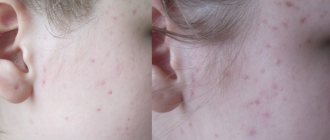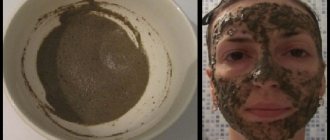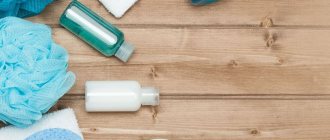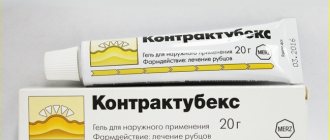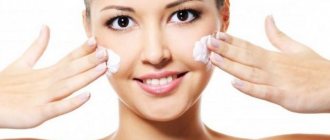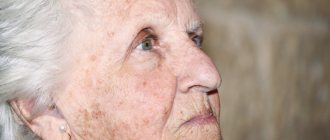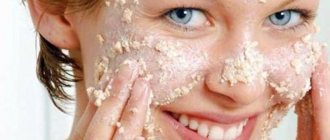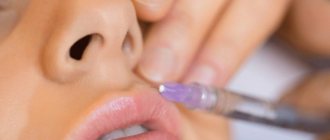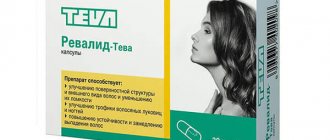Why do you need peeling?
Every day, people travel long distances on foot or spend hours standing because their jobs require them to do so. We wear uncomfortable shoes made of artificial materials, drink little water, so the skin on our feet is constantly exposed to external and internal influences, which is why it becomes rough. Living skin cells do not receive sufficient nutrition and become covered with a layer of dead epithelium. In this case, peeling comes to the rescue. Its action is aimed at renewing skin cells and cleansing it of growths. Regular exfoliation will help prevent foot fungus, keep your skin youthful, and get rid of unpleasant odor. This procedure is painless and even pleasant.
Proper peeling is carried out in three stages:
- Preparing the surface of the feet. Depends on the type of peeling. In some cases it is necessary to steam the skin, in others it is necessary to treat it with an antiseptic.
- Cleansing the skin of rough epithelium. What is usually called peeling. It is carried out manually, using hardware or a combined method.
- Hydration. After cleansing, apply moisturizer or other care products to your feet.
The best ways to exfoliate your feet
There are several ways to exfoliate the skin of your feet. But each of us has different skin. Some are more sensitive, some are less. Therefore, the methods are not suitable for everyone; you need to choose the one that seems more comfortable. Below I will talk a little about the benefits of each of them.
My advice to you. Exfoliate before you begin hair removal, whether shaving, waxing, or epilating. This will help you get smoother skin on your feet and prevent ingrown hairs.
Also, take the time to exfoliate your skin between hair removal sessions. For example, I do this every day, after a shower. I usually wait a couple of weeks after epilation because the skin becomes more sensitive after the hair is removed along with the root.
Contraindications
Everyone wants to show off their smooth and clean feet, but not everyone benefits from exfoliation. An irresponsible attitude towards this procedure, especially when performing hardware peeling, will lead to serious health problems.
Peeling will have to be abandoned if the skin contains:
- Inflammation.
- Scratches, cuts and other damage.
- Insect bites.
- Cracks.
Allergic reactions, dryness and irritation, wounds - all these are possible consequences of improper peeling. Take care of yourself and pay attention to contraindications!
Main types of peeling
Hardware
Attention! This type of peeling is carried out only in beauty centers. An unqualified “master” can damage the skin of the feet and even cause infection. Be careful, do not trust such work to homeworkers with a dubious reputation.
During hardware peeling, a technique is used - for example, rough areas of skin are cut off with a grinding machine. This processing is distinguished by its thoroughness. At the end of the procedure, the skin is moisturized with cream.
Mechanical
The simplest type of peeling is using small abrasive particles. For mechanical cleaning, pumice stones, files, graters, scrubs are used, and all this is easy to use at home. The effect of this procedure is noticeable immediately, but does not last long: the body actively reacts to the mechanical impact on the skin and quickly creates new growths on the heels.
Before mechanical peeling, steam your feet in a bath of warm water. Herbs - chamomile, sage and essential oils - lavender or tea tree will help enhance the effect of steaming. Cream will help moisturize the skin after the procedure.
Chemical
This type of peeling is often called “acid” because the effect of this procedure is achieved with the help of acids. This is one of the most effective types of cleansing the skin of the feet. It will not only rid your feet of growths, but will also eliminate pigment spots and speed up skin restoration.
There are two types of chemical peels for the feet:
- Surface. Renews the upper layers of the skin. The acids used for superficial peeling are non-aggressive, which makes it possible to carry out this procedure at home. However, do not forget about precautions: check for damage to the skin.
- Median. Acid peeling with a stronger effect on the skin. This prolongs the peeling effect for up to six months. Only a beauty salon specialist has the right to carry out such a procedure.
Three acids are suitable for home superficial peeling: fruit, lactic and salicylic. The rules for the procedure are slightly different in each of the three cases. The main thing is to pay attention to the instructions attached to the chosen product so as not to get burned.
Fruit peeling
To perform peeling using fruit acid you will need:
- Disposable gloves.
- Bath with water.
- Product based on fruit acid and a brush for applying it.
- Disinfector.
- Cling film.
- Pumice.
- Towel.
- Moisturizing foot cream.
If there is no damage to the skin, proceed to peeling. First, treat the feet with an antiseptic to prevent infection. Next, soak your feet in the bath for 10 minutes. Then dry the skin with a towel and disinfect it again. Before applying fruit acid, do not forget to wear rubber gloves - they will save the skin of your hands from burns. You need to apply fruit acid with a brush and only to problem areas, and then wrap your feet in cling film. After just 5 minutes, your feet are ready for cleansing. Rinse thoroughly and rub your feet with a pumice stone. There is no need to be overzealous - the acid has already penetrated the skin and prepared it for this step. Apply moisturizer - now you're ready!
Milk peeling
Peeling using lactic acid is almost no different from peeling with fruit acid. One additional tip: going to the solarium two weeks before a milk peel can cause a burn, so it's best to postpone tanning until later.
Milk peeling products are different: some contain only 10% acid, while others contain up to 70%. If milk peeling is something new for you, use the most gentle means. This will make it easier to avoid an unexpected reaction to lactic acid.
Salicylic peeling
And again the same rules - disinfect the skin, soak it, apply the peeling agent for 5 minutes and rinse it thoroughly using a pumice stone or a wooden spatula. For the procedure, use a product with 25% salicylic acid.
Alkaline peeling
Another type of chemical peeling. It is no longer called acidic, because during the procedure the acid affects the skin of the feet only after activation with a special composition. As a result, salt is applied to the keratinized areas of the skin. Alkaline peeling acts even faster than acid peeling; the composition is kept on the feet for no more than five minutes.
Peeling in socks
Peeling socks are a solution for those who value simplicity and convenience. Freely sold in cosmetics stores. Peeling in socks is comparable in effectiveness to acid peeling; its main advantage is safety. However, not everyone will like this type of peeling, because after it the skin of the feet actively flakes off and does not look very aesthetically pleasing.
To perform peeling, put on special socks and regular socks on top of them and leave both pairs on your feet for one and a half to two hours. At this time, you should not walk a lot, so you will get the maximum effect from the procedure. When enough time has passed, rinse off the product with water.
Enzyme peeling
To carry out enzyme peeling, specialists in beauty salons use preparations containing enzymes. Penetrating into the stratum corneum of the skin, enzymes help get rid of its rough particles. Enzyme peeling is more gentle than acid peeling, but it is only carried out by professionals, since at home there is a risk of applying the product incorrectly.
Attention! If you decide to carry out enzyme peeling at home, do not massage your feet while applying the drug and do not rinse it off with water.
Enzyme peeling is carried out in three stages:
- A small amount of a preparation containing enzymes is applied to the feet.
- The legs are wrapped in film for 15-20 minutes.
- The product is removed from the feet with napkins.
Benefits of use
For the first time, the idea of developing a product that can exfoliate dead, rough skin from the feet came to Korean cosmetic manufacturers. Thanks to them, socks-shaped masks were born. This is an innovation that has a double effect. To use it, you do not need to pre-steam or do a pedicure.
The heel mask has the following effects:
- softening from the effects of active components, the foot becomes smooth and soft;
- treatment;
- hydration;
- removal of complex roughness;
- acceleration of regenerative processes;
- strengthening the walls of blood vessels and capillaries;
- eliminating unpleasant sweat odor.
Ingredients of the exfoliating foot mask:
- fruit acid helps dead cells slough off without damaging healthy tissue;
- plant extracts have a softening, nourishing, moisturizing effect and relieve dryness.
There are varieties containing cooling components that have a beneficial effect on varicose veins.
The mask looks like an ankle-length plastic sock. Inside there is a caring composition in the form of a liquid.
Contraindications to chemical peeling
Despite the fact that chemical peeling, when carried out correctly, is safe, there are still several contraindications to it. The products used for such peeling contain substances that can sometimes endanger human health.
Chemical peeling is contraindicated:
- Pregnancy and lactation period. In early pregnancy and during breastfeeding, you should not apply acidic compounds to your skin.
- Colds, fever. During illness, the body directs all its forces to fight the virus. After an acid peel, our body seems to be a little “distracted” to restore skin cells, so the patient’s condition after such a procedure risks worsening.
- Abrasions and purulent wounds. Remember how wounds hurt if lemon juice gets on them? The same thing can happen with acid peeling if there are damaged areas on the skin. Moreover, getting the product into a wound sometimes leads to a subcutaneous infection.
- Diabetes. This disease, among other sad consequences, often causes dry skin and cracked heels. If you are a diabetic and are concerned about these symptoms, seeing a doctor is the best option.
- Oncology.
- Skin diseases.
Peeling with Garra Rufa fish
This type of peeling is done by special fish. In nature, they feed on algae and bacteria, and in spas they help visitors get rid of growths on their feet. Sometimes garra rufa fish are even called “doctor fish,” because peeling with fish temporarily saves psoriasis patients from plaques.
Garra rufa does not have teeth; they latch onto dead skin particles on the legs and pluck them. This lasts 15 minutes. The saliva of the doctor fish softens the skin and has a healing effect, and the pinches of these little pedicurists cause a slight tickle, but not pain.
Cleaning your feet at home
Home peeling is not as effective as salon procedures, since at home we use much less aggressive products. And yet, such procedures, if carried out regularly, will change the appearance of the feet for the better.
Almost every grocery store will have ingredients that are suitable for exfoliating your feet. Choosing a composition to suit your taste and budget is not difficult.
Mechanical cleaning
Recipes for home mechanical peeling are similar. Here are just a few of them:
- Ground coffee and sea salt are mixed in a 1:1 ratio.
- The tomato pulp is mixed with a tablespoon of sea salt.
- Soaked oatmeal is mixed with a small amount of honey and olive oil.
- To two tablespoons of sugar add a tablespoon of body cream.
- Coffee or coffee grounds are suitable for peeling without mixing with sea salt.
Gentle acid peeling
The most unexpected foods from the refrigerator and other supplies are suitable for clearing build-up from your feet. This acid peeling does not pose any danger if you are not allergic to the components of the home remedy.
- Put plastic bags on your feet, pour kefir into them, heated to 35 degrees. Socks will help enhance the effect.
- Grind the citrus fruit in a blender along with the peel, but without the seeds, and apply the resulting mass to the feet, leave for 7-10 minutes.
- Grind five aspirin tablets and add the juice of half a lemon to the powder. Apply the mixture to your feet and put plastic bags on top. Leave for 40-60 minutes.
